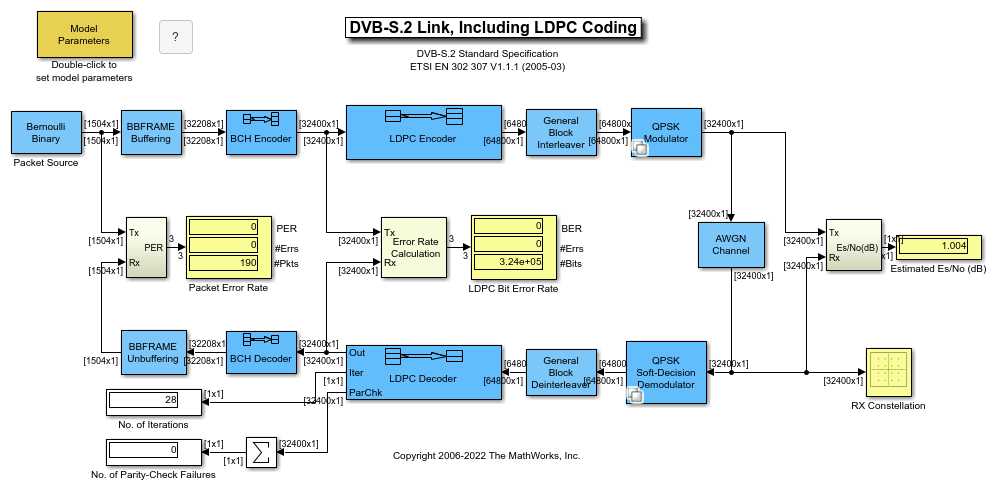LDPC Encoder
Encode binary low-density parity-check (LDPC) code
Libraries:
Communications Toolbox /
Error Detection and Correction /
Block
Description
The LDPC Encoder block applies LDPC coding to a binary input message. LDPC codes are linear error control codes with sparse parity-check matrices and long block lengths that can attain performance near the Shannon limit.
The input and output are discrete-time signals. The ratio of the output sample time to the input sample time is K/N, where:
N is the length of the received signal and must be in the range (0, 231).
K is the length of the uncoded message and must be less than N.
Examples
Extended Examples
Ports
Input
Output
Parameters
Block Characteristics
Data Types |
|
Multidimensional Signals |
|
Variable-Size Signals |
|

